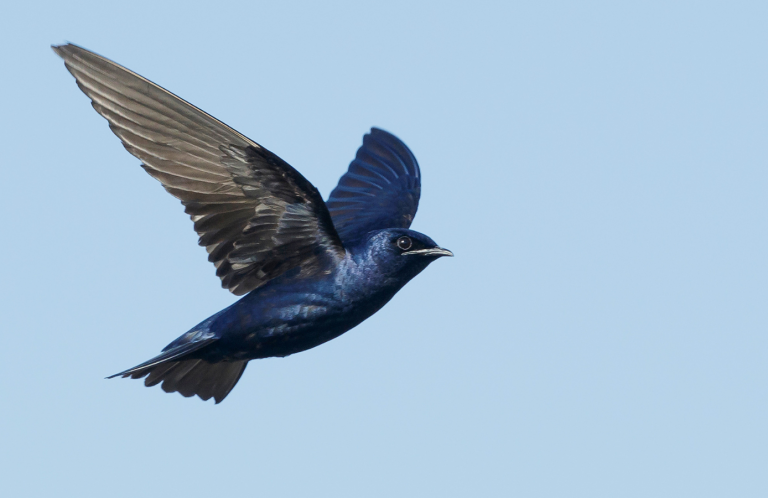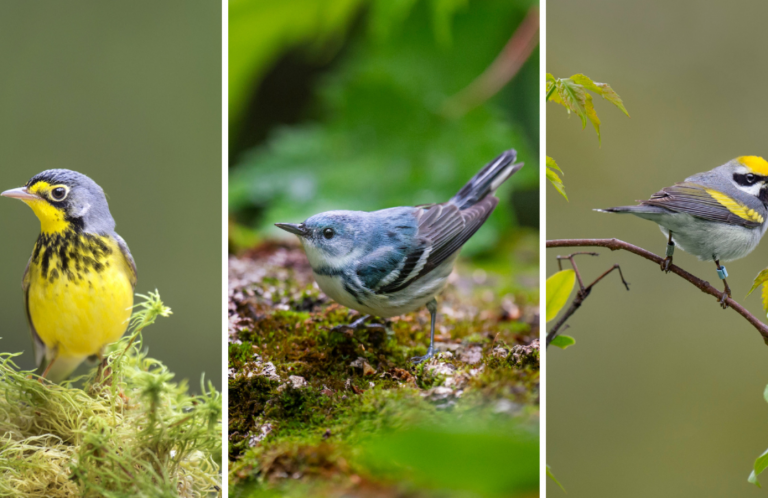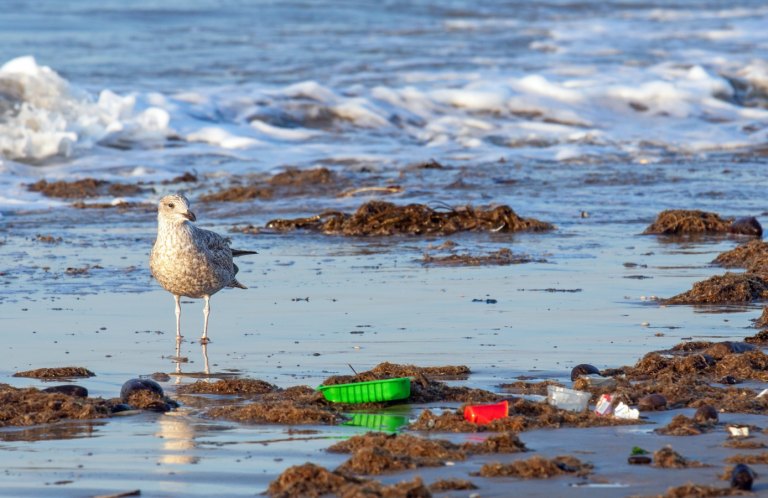Thirteen Tips to Make the Journey Safer for Migrating Birds
Right now, millions of birds are on their way north to their breeding grounds, drawn by the abundant food sources and nesting sites that await them. Their journeys, sometimes spread out across weeks of long-distance flights, are not only intense; they are also fraught with danger. Many of the warblers, tanagers, flycatchers, and other migratory birds en route now will never make it to their breeding territories.
Bright artificial lights at night, when many birds are migrating, can draw them off course into a maze of reflective surfaces. They may collide with a window, fall prey to a free-roaming cat, or wind up in a landscape of non-native plants and struggle to find food to fuel their next flight. Migration is strenuous even under ideal conditions, but with these challenges added, it is not surprising that many birds won't complete their journeys.
Humans are the cause of many of the threats birds face, but humans can also make the world safer for birds in the habitats around us, like our yards and local parks. American Bird Conservancy's (ABC) staff share their top tips for helping birds during spring migration. Many actions we can take are as simple as flipping a light switch or buying bird-friendly products, but they can make a big difference for birds.
1. Protect Birds from Cats

“Cats are lovable pets, but they're also instinctive predators with outsized impacts in local environments. One cat alone can kill dozens of birds each year. With so many cats roaming outdoors, it all adds up! So keep your cat on a leash or in an enclosure to protect migratory birds (and keep your cat safe, too). Don't have a cat? You can still support bird-friendly practices in your community by encouraging the passage of local ordinances mandating responsible pet ownership. Learn more about other simple actions you can take to protect birds on our Cats Indoors page.”
– Grant Sizemore, Director of Invasive Species Programs
2. Treat a Window to Save a Bird
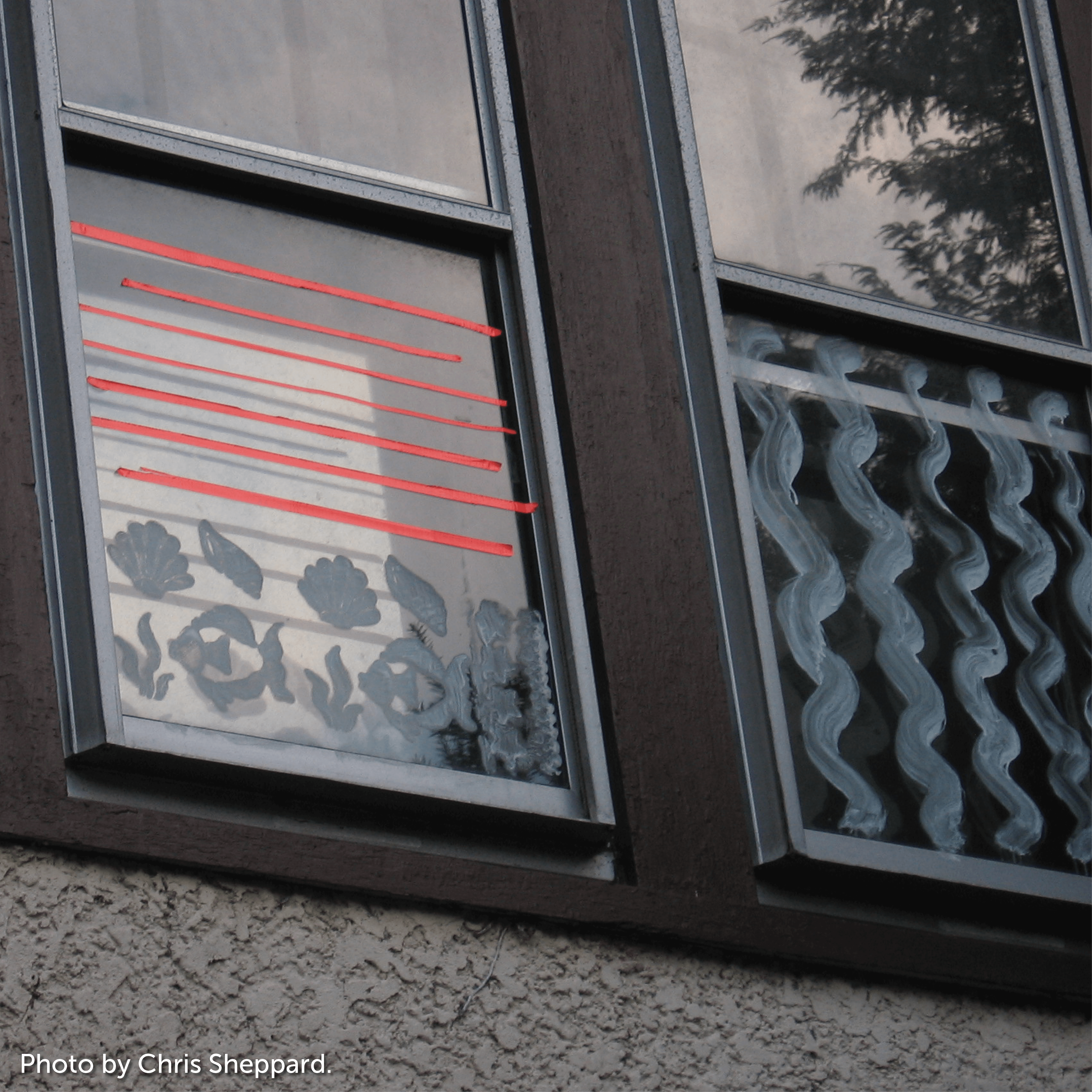
“Up to 1 billion birds die each year in the United States from colliding with glass — almost half of those on home windows and low-rise buildings. Luckily, there are many ways to make your windows safe for birds.
Visit ABC's home windows page to view simple, effective products and strategies you can use to save birds at your home. One of my favorite strategies is to get creative by applying tempera paint to the outside surface of glass. Tempera is nontoxic, cheap, easy to use (and remove), and amazingly long lasting — even in rain. If you're short on time, using a sponge is a good way to make a quick pattern. With a little more effort, you can create spring-themed designs or even small works of art depicting your favorite birds; either will help prevent collisions. Remember: Whatever kind of design you use, try to make sure your lines are no more than two inches apart to help smaller birds avoid collisions.”

– Chris Sheppard, Glass Collisions Program Senior Director
3. Flip the Switch on Lights at Night

“Collisions with glass are a conservation crisis, but one that everyone can do their part to prevent. Lights at night draw migrating birds into our cities and suburbs where they can collide with windows. Everyone can step up to turn down the lights.
You can help birds during critical migration periods by turning off all non-essential lights at 11 p.m. and leaving them off until the following afternoon. Learn more about how you can help by visiting BirdCast's Lights Out webpage. You can also find out if a large number of migratory birds is passing through your area by checking BirdCast's online alerts.”

– Bryan Lenz, Glass Collisions Program Director and Bird City Network Director
4. Plant a Seed for Birds' Futures

“I've packed my quarter-acre lot in suburban Maryland with dozens of the same native plant species you might see in nearby woods. There's a ‘mini meadow' of asters, goldenrods, and native grasses, and a tiny woodland of native viburnums, hollies, and other berry-producing shrubs that birds love. But the most important way I support my local birdlife is by learning to love insects. Even seed-eating birds can't live without insects, because their nestlings need protein-rich caterpillars to thrive. My yard is a ‘pesticide-free zone' and I prioritize plants that support the most insect species, using Douglas Tallamy's research on plant-insect interactions as a guide. Some of them, like wild cherries, feed more than 450 species of moths and butterflies in the Mid-Atlantic region.”

– Clare Nielsen, Vice President of Communications and Marketing
5. Let Your Woods Go Wild

“You can provide habitat for birds during spring migration by letting things around the yard get a little messy. I have a wooded backyard, so I try to leave it as natural as possible. I let the understory grow and pull invasive plants such as Japanese Stiltgrass and Garlic Mustard. I leave logs and fallen branches in place to shelter insects and other small critters that birds feed on. When larger trees break or fall, I leave them be — as long as they're not hanging over the roof. This gives snag-nesting migrants like the Great Crested Flycatcher places to nest — along with year-round residents like the Eastern Screech-Owl and Downy, Hairy, Pileated, and Red-bellied Woodpeckers — and is a nice source of grubs and other bird food.”

– Gemma Radko, Bird Library Specialist
6. Buy Bird-Friendly Products and Support Agroforestry
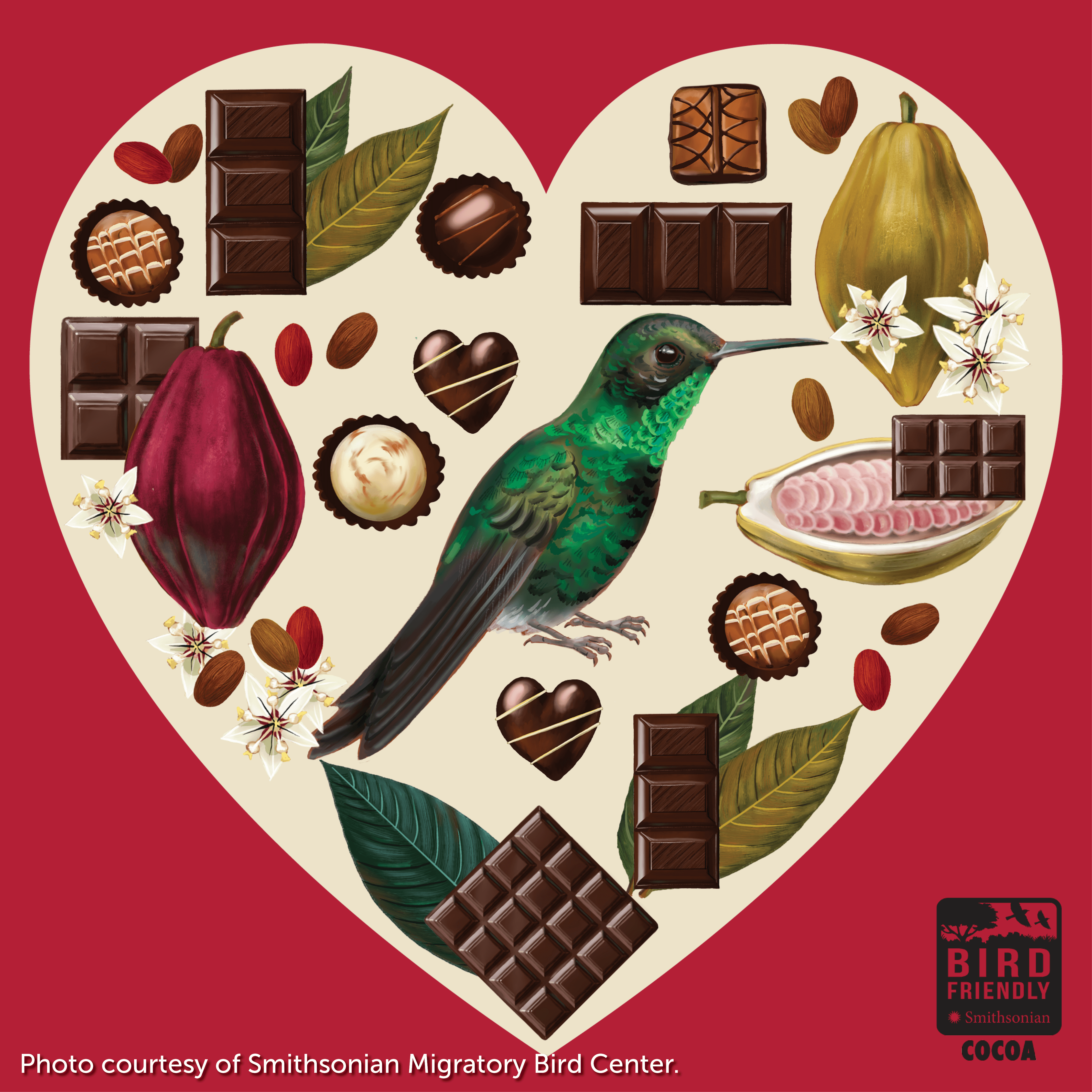
“Coffee is one of the most traded commodities in the world. To meet demand, coffee is often grown on monoculture plantations across the world that cover hundreds of thousands of acres and provide little to no habitat for birds and wildlife. However, there is a better alternative. Shade-grown coffee, cultivated under existing tree canopies, doesn't require deforestation, leaving habitat intact for wildlife. It also tastes great!
The Bird Friendly coffee certification developed by the Smithsonian Migratory Bird Center (SMBC) establishes the best coffee farming practices to provide birds with forest-like habitat. Farmers who receive certification from the SMBC can also access better prices for their coffee. In early 2021, ABC and our Venezuelan partner, Provita, worked with farmers to help certify and sell Venezuela's first-ever Bird Friendly® coffee. In 2023, we helped the SMBC expand the Bird Friendly® certification to cacao. Now you can also purchase bird-friendly chocolate!
Farms that practice agroforestry (the intentional intermixing of trees and shrubs with crops) offer good habitat for a wide diversity of birds, from canopy-dwelling birds to ground nesters. By adding trees to agricultural landscapes, we can increase forest availability and connectivity for birds. We can also provide them with a variety of food sources, such as fruits, seeds, insects, and nectar. Next time you visit your farmers' market, ask if their produce was grown in an agroforestry system. If it was, please thank them for helping us conserve birds.”

– Andrés Anchondo, Migratory Bird Habitats in Latin America and the Caribbean Program Director
7. Put Plastic in Its Place

“Each year, 17 billion pounds of plastic enter our environment and this is a major hazard for birds! Birds can ingest plastic or get entangled in plastic, leading to starvation, serious injuries, or even death. When birds migrate through our communities, we want to give them a safe place to stop as they continue on their journey. During your next beach day or hike in the park, take a second to pick up any bits of trash you see. Taking an extra minute to leave nature better than you found it will greatly improve bird habitat and reduce the threat of plastic pollution!
You can also help birds by reducing your single-use plastic usage! Eighty percent of trash in the marine environment comes from land-based sources because trash can be swept downstream via gutters, bayous, and other waterways to our oceans. Consider switching out plastic bottles for reusable ones, or taking your own bags to the grocery store. We can all ‘help a litter bit' by keeping less trash from entering our environment. Learn about ABC's work to protect birds from plastic pollution with SPLASh.”

– Chloe Dannenfelser, Texas Coastal Outreach Coordinator
8. Share the Beach with Nesting Birds
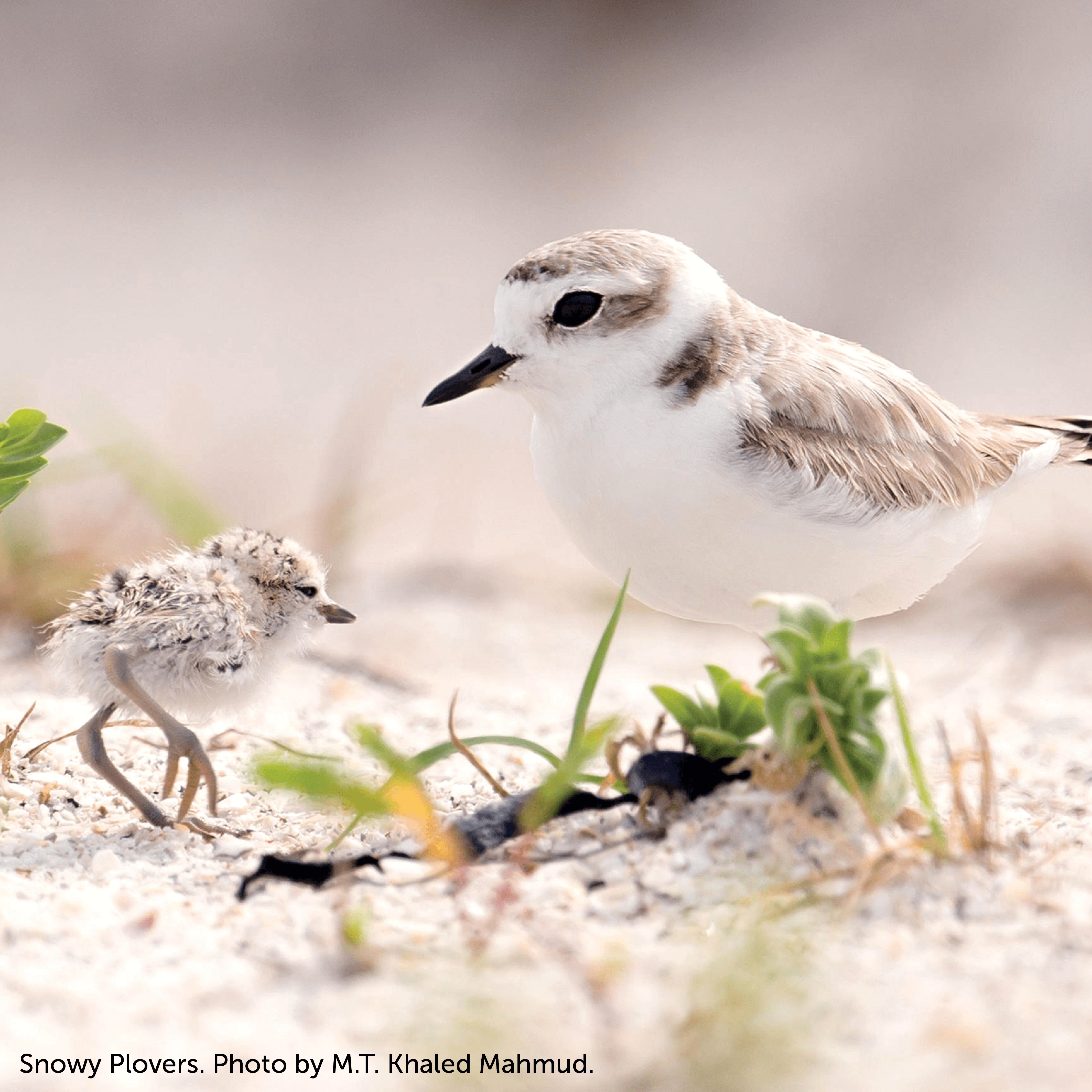
“As we head into summer, many of us plan to spend time at the beach and so do the birds. We share our shores with a variety of vulnerable beach-nesting birds, such as Snowy Plovers and Least Terns, that are easily susceptible to disturbance. The good news is that we can take small steps to provide safe places for these birds while recreating at the beach. Give beach-nesting birds plenty of space. Here on the Gulf Coast, we like to say, ‘Fish, Swim, and Play from 50 Yards Away.' Birds that are disturbed run the risk of being off of their nests for extended periods of time, which can lead to the loss of eggs or chicks due to overheating or predators. Lead by example and keep your pets on a leash at all times while visiting the beach this summer. Off-leash dogs pose a threat to birds and have the potential to take eggs or chicks. These simple steps will lead to better outcomes for our feathered friends.”

– Anna Deichmann, Gulf Coastal Program Director
9. Help a Hummingbird Along the Way

“Put out those hummingbird feeders during spring migration — the hummers are arriving. Be sure to use a mixture of four parts water to one part sugar. And do without the dye: Red dyes serve no purpose. Most hummingbird feeders already have enough color on them to attract hummingbirds, and, even worse, these dyes contain petroleum that may be harmful to hummingbirds. Don't forget to change the mixture and clean feeders often to be sure it's fresh and safe for those super-charged flying jewels.”
– E.J. Williams, Southeast Region Director

10. Keep the “Kitchen” Clean for Birds

“Bird feeders are basically the kitchens and dining rooms of our backyards. It would be hard for us to imagine not washing our dishes. We should think of bird feeders and bird baths in a similar way.
If you're using a bird feeder or bird bath, it's important to keep them clean with regular washes. A 10-percent bleach solution (one part bleach mixed with nine parts water) followed by a water rinse and complete air-dry works best. To keep hummingbirds happy and healthy, wash their feeder using the same bleach solution at least once per week.”

– Jordan Rutter, Director of Communications
11. Help Make the Outdoors Accessible and Inclusive
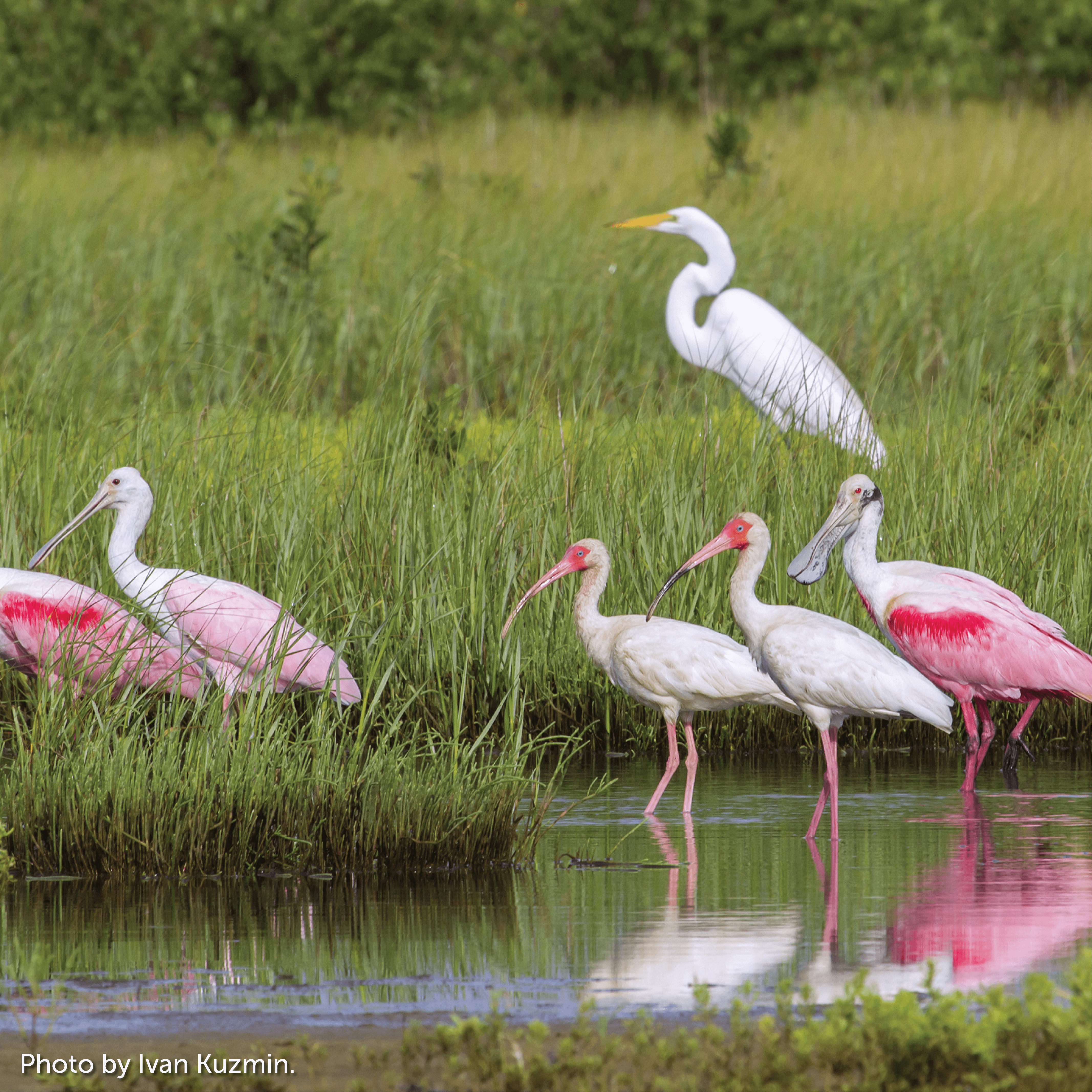
“Everyone should be able to enjoy the wonders of bird migration, and we all have a role in making that possible. Many who engage in birding face issues related to discrimination, safety, and access, including birders of color, women, LGBTQIA+ people, or folks with disabilities.
In addition to events like Black Birders Week and Latino Conservation Week, groups such as Birdability and the Feminist Bird Club are working to address these and other barriers through advocacy, education, and community engagement. By following and supporting this work, we can help the communities these groups serve and the birding community at large. Bringing more people into the fold, with diverse perspectives and experiences, is also a good way to strengthen bird conservation. As Dr. J. Drew Lanham wrote: ‘If the goal is to conserve, then we need all involved that we can muster.'”

– Erica Sánchez Vázquez, Multimedia Producer
12. Discover the Habitat Around You

“Go birding and get familiar with the bird habitat near you. It may be closer than you think, and the time you spend in nature can be good for your health. Even in large cities, there are forested parks, lakes, and possibly wetlands that provide important habitat to birds as they migrate. Speak up for the conservation of these places, whether they are forests in your town or county, state or federal parks, wildlife management areas, or forests. All can provide high-quality stopover habitat for birds along their journeys.
Lakes and wetlands are essential for migrating waterfowl and shorebirds. Though wetlands today make up only a small part of the U.S., more than one-third of the bird species in North America rely on them for food, shelter, nesting, and drinking water. Reducing your use of pesticides and other chemicals as well as single-use plastics can help keep waterways clear.”

– David Wiedenfeld, Senior Conservation Scientist
13. Use Your Voice for Birds
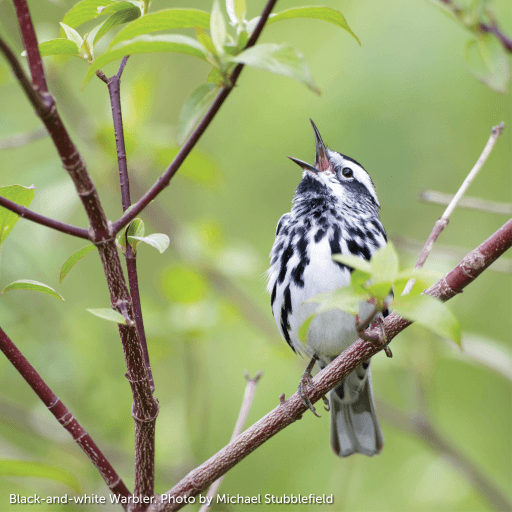
“Birds use their beautiful voices for song, not for advocacy. That's where we come in! Communicating your support for bird conservation programs and asking for action on our policy priorities is one of the best ways to make a difference. By securing support for critical conservation programs like the Migratory Bird Joint Ventures, Neotropical Migratory Bird Conservation Act Grants, and federal agencies which advance conservation, we are helping to reverse bird declines.
Whether you want to keep the Lesser Prairie-chicken listed as an Endangered Species, responsibly site renewable energy, or boost bird conservation in the federal budget, you can join us and take action today!”

– Hardy Kern, Director of Government Relations






































